Several thousand years after the pyramids, which were constructed in the 26th century BCE, the Valley of the Kings was built to house the preserved bodies of the Pharaohs of the 16th to 11th century BCE. This long narrow valley is just west of the Nile River in Upper Egypt. It was part of the ancient city of Thebes and was the burial site of almost all the kings (pharaohs) of the 18th, 19th, and 20th dynasties (1539–1075 BCE), from Thutmose I to Ramses X.

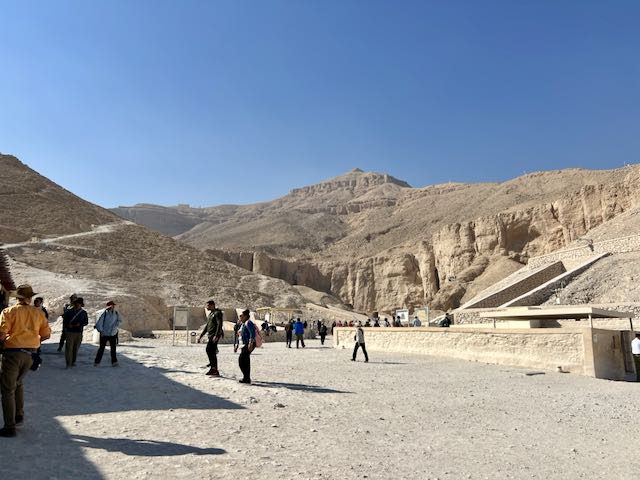
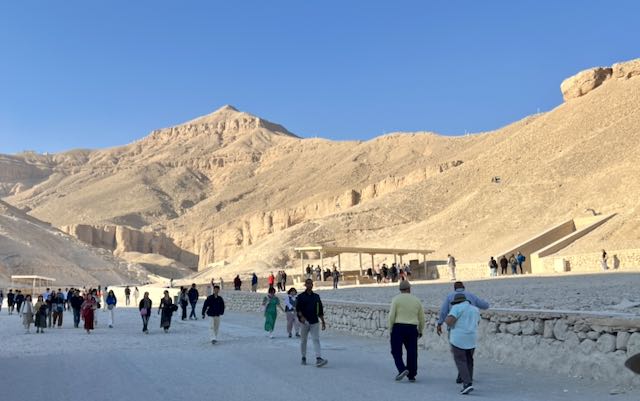
There, in tombs sunk deep into the heart of the mountain, pharaohs were interred, as were several queens, a few officials of high rank, and the numerous sons of Ramses II. The plan of the tombs varies considerably but consists essentially of a descending corridor interrupted by deep shafts to baffle robbers and by pillared chambers or vestibules. At the farther end of the corridor is a burial chamber with a stone sarcophagus in which the royal mummy was laid and store chambers around which furniture and equipment were stacked for the king’s use in the next world.
The Valley of the Kings is most famous for the tomb of Tutankhamun which was discovered in 1922. It was the first, and only, tomb discovered that had not been pillaged. It took ten years to record and remove its contents with a photographer producing a complete, detailed photographic record of the contents. It was not until 2006, 84 years after the discovery of Tutankhamun’s tomb, that another tomb was discovered here bringing the total number of known sites to 65 tombs and chambers in the Valley of the Kings.
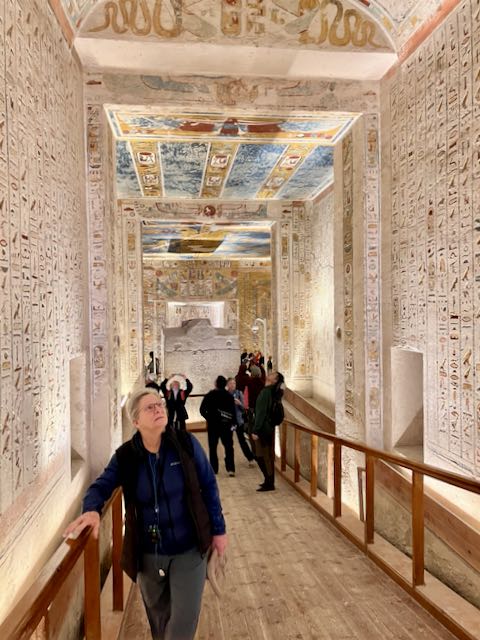
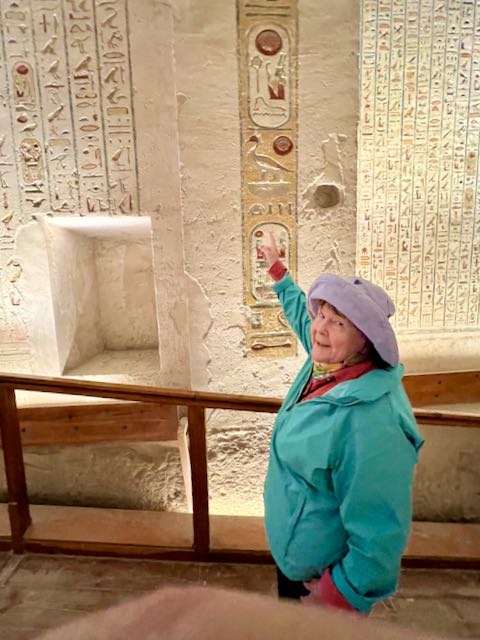
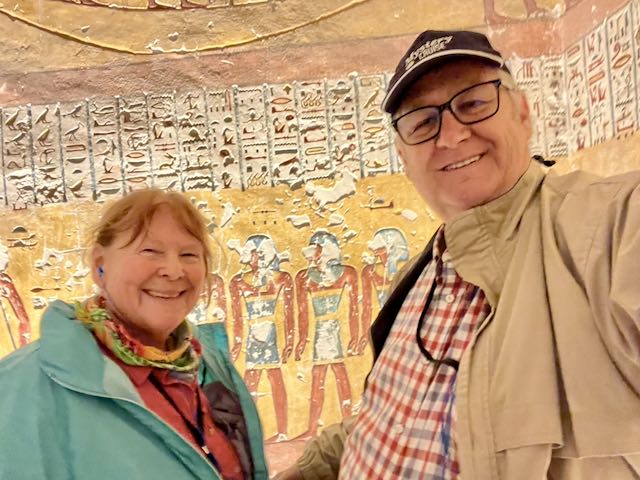
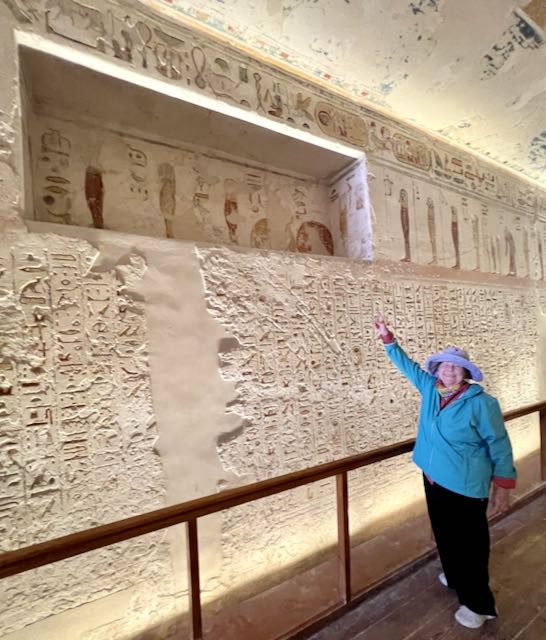
Rameses IV tomb – Just amazing how much the color still is vibrant and beautiful. Clearly a tomb that has seen a LOT of visitors. The shelf, Janeen is point at, where they placed 365 statues, intended to serve the King in the afterlife, one for each day.
Virtually all the tombs in the valley were cleared out in antiquity. Some had been partially robbed during the New Kingdom, but all were systematically looted of their contents in the 21st dynasty. In the time of Strabo (1st century BCE), Greek travelers were able to visit 40 of the tombs. Several tombs were reused by Coptic monks, who left their own inscriptions on the walls. Only the little tomb of Tutankhamun (reigned 1333–23 BCE), located on the floor of the valley and protected by a pile of rock chippings thrown down from a later Rameses side tomb, escaped pillage. The wonderful treasures that were exhumed from Tutankhamun’s tomb in 1922 and that now reside in the Egyptian Museum in Cairo vividly indicate how rich the burial of a great pharaoh of the empire’s heyday must have been.
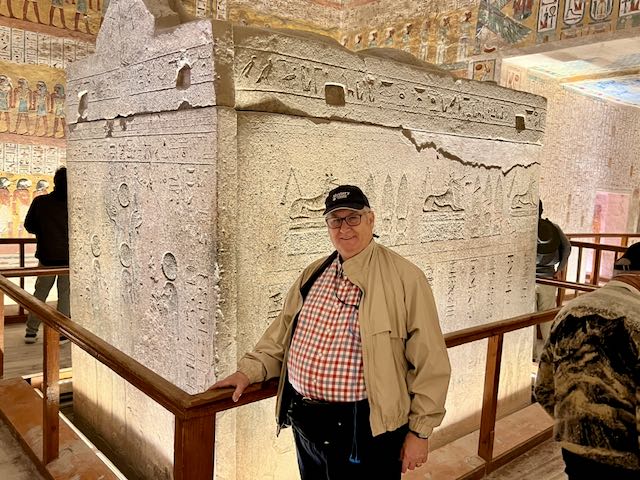

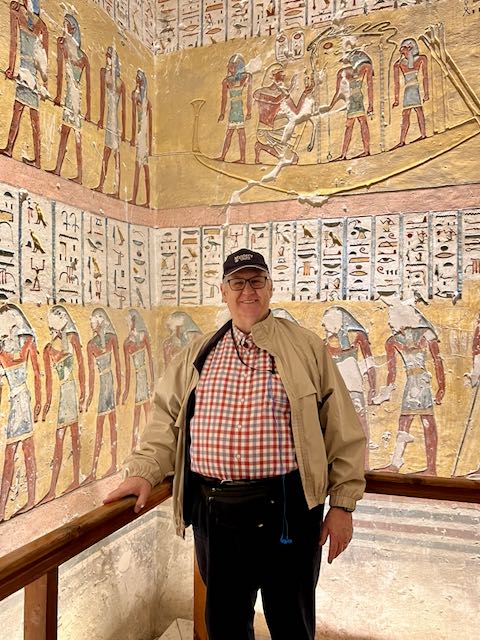
Once we arrived at the site, we got an overview of Rameses IV tomb and descended into the shaft. The tomb is located low in the main valley and it has been open since antiquity and contains a large variety of graffiti from various ‘visitors’ over the centuries. The tomb is mostly intact and is decorated with scenes from the Litany of Ra, Book of Caverns, Book of the Dead, Book of Amduat and the Book of the Heavens. The tomb was laid out along a straight axis about 290 feet in length and consists of three slowly descending corridors. At the end is an enlarged chamber, and then the burial chamber. Past the burial chamber is a narrow corridor flanked by three side chambers.
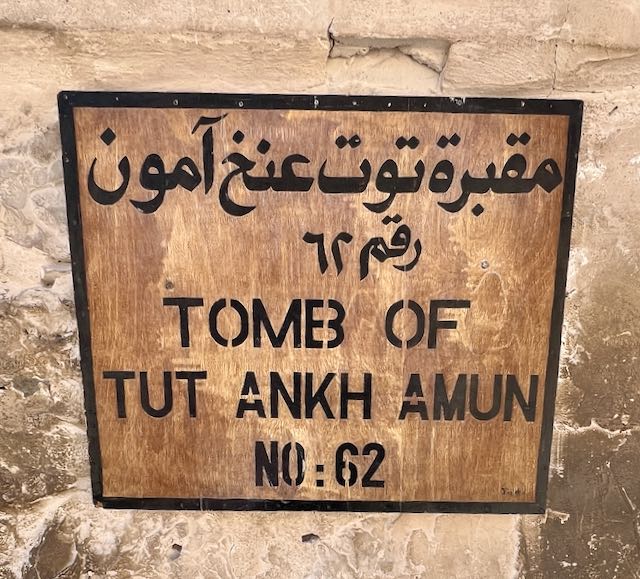
Next up was the Tomb of Tutankhamen. Upon Tutankhamen’s death at about age 19 (reign c. 1333-1323 BCE), an existing tomb was hastily adapted for his burial. Only the Burial Chamber was painted, depicting scenes of his journey into the afterlife.
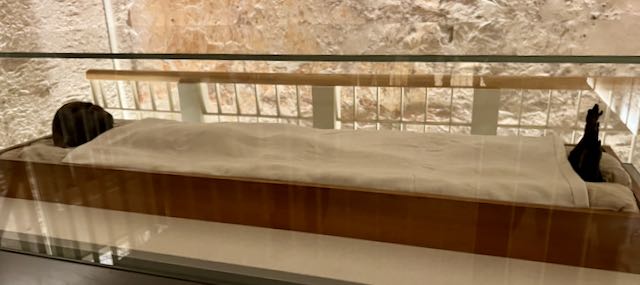
Now over 3,300 years old, the paintings have remarkably little loss and the original colors are still vibrant. Today, only the mummy of the king, the outermost of his three nested coffins, and the stone sarcophagus and its lid remain in the tomb. The other objects found in the tomb upon its discovery in 1922 were removed to Cairo
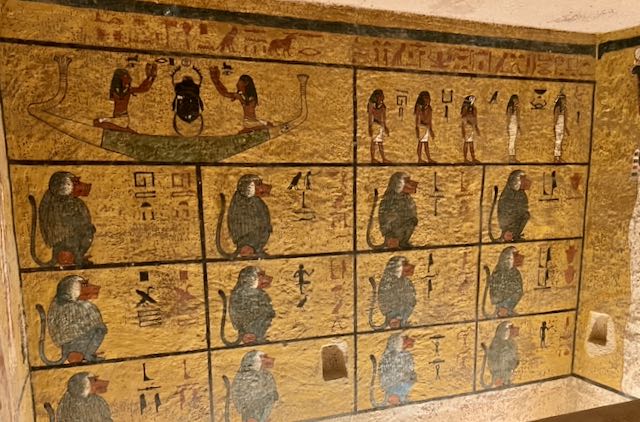
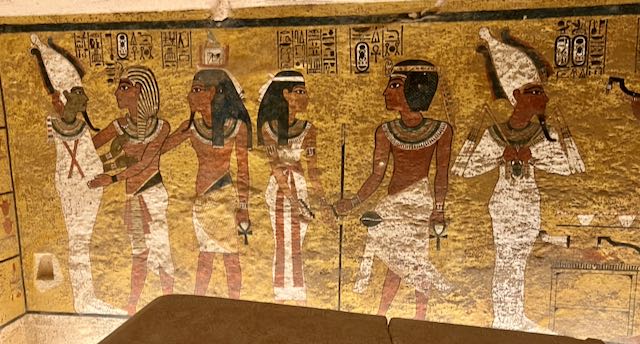
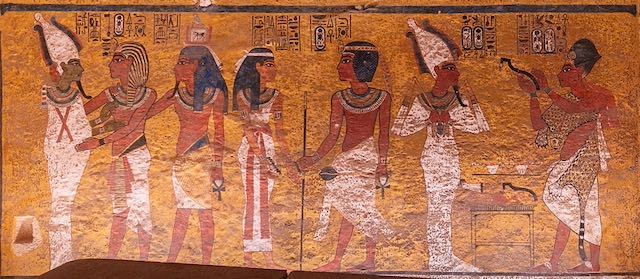
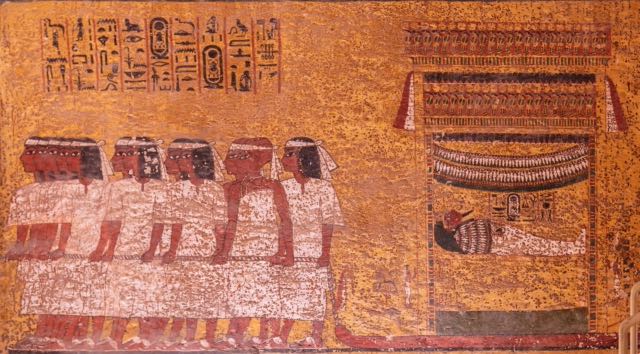
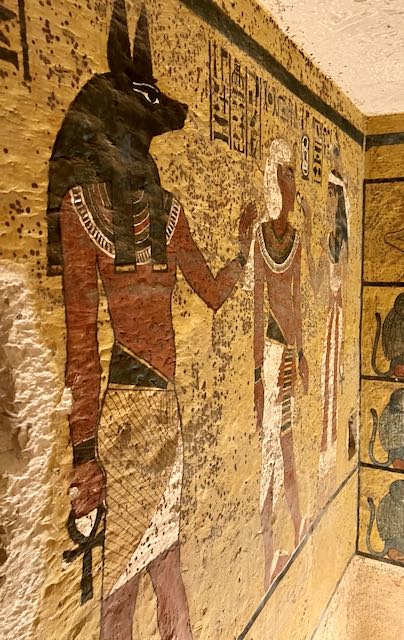

Our third, and last tomb, was the final resting place of the 20th-Dynasty Pharaoh Ramesses IX. It has been suggested, from the archaeological evidence and the quality of decoration it contains, that the tomb was not finished at the time for Ramesses’s death but was hastily rushed through to completion, many corners being cut, following his demise. Located in the central part of the Valley, it has been open since antiquity and also shows graffiti from various visitors.
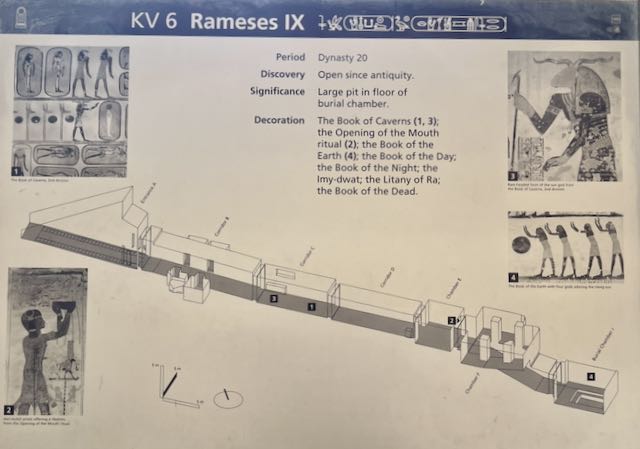

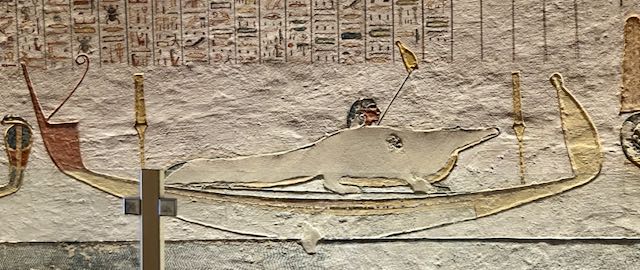
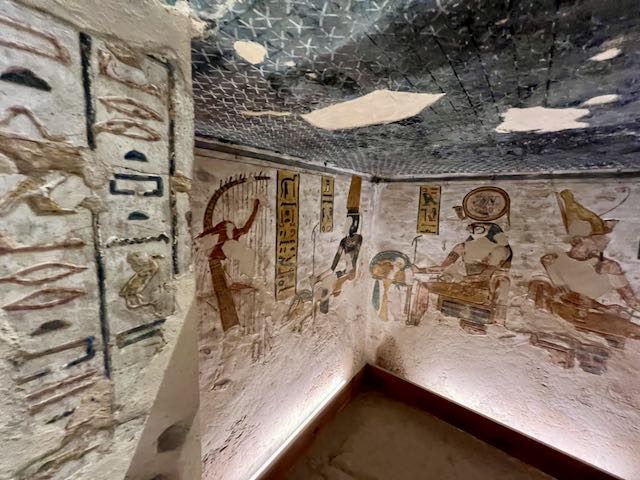
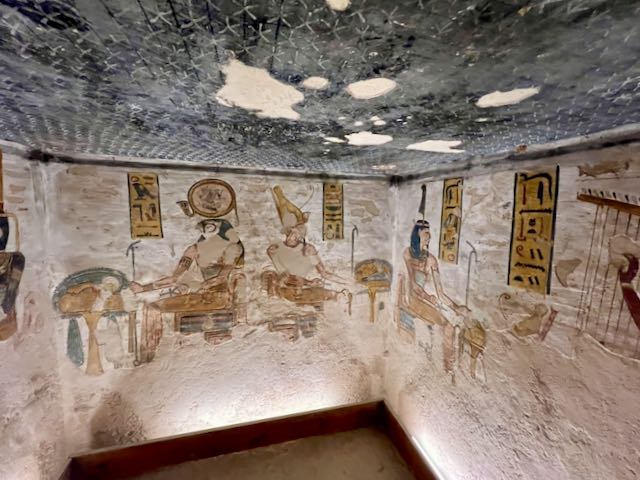
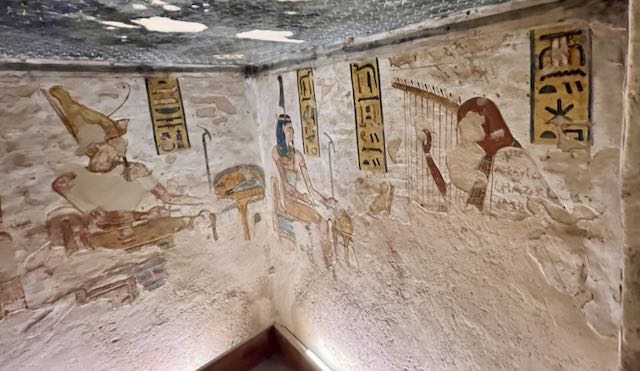

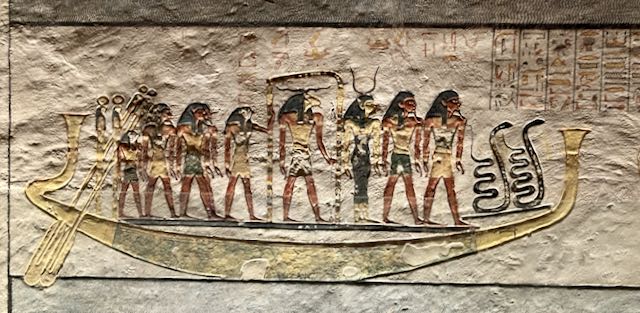
The ceiling is vaulted, and is decorated with splendid pictures of the goddess Nut. The side walls show scenes from the Book of Caverns and the Book of the Earth. The far wall depicts Ramesses on his barque, surrounded by a host of gods. The yellows, dark blues, and blacks used to decorate this chamber are visually striking and unusual among the tomb decorations in the Valley.


On the left, a croc crocodile in a boat, and on the right, in his celestial ascension, the king traverses vast oceans, accompanied by a pantheon of deities.
You cannot visit the Valley of the Kings and not be blown away by the artistry that is depicted in all the tombs or the amount of work that was required to make these spaces. If the items left with Tutankhamen is representative of what would have been left within each tomb, it is quite amazing. Of course, it’s very clear that while each King tried to protect his tomb as much as possible, the workers who built it and who eventually placed the king in his final resting spot knew where it was and how to access it so, predictably they would return and pick up a trinket or two for sure.
We were told that the carvings and painting made deep in the tombs used light reflected from the entrances off polished brass plates with more reflectors down the passageways to the area where the tomb art was being created. There was a person at each plate keeping the reflections while following the sun outside.
Amazing!
This is wonderful. The next time you come to visit, I’ll show you the photo that my David took of one of the workers in the Valley of the Kings ~ It’s super and you might want to have it 🙂